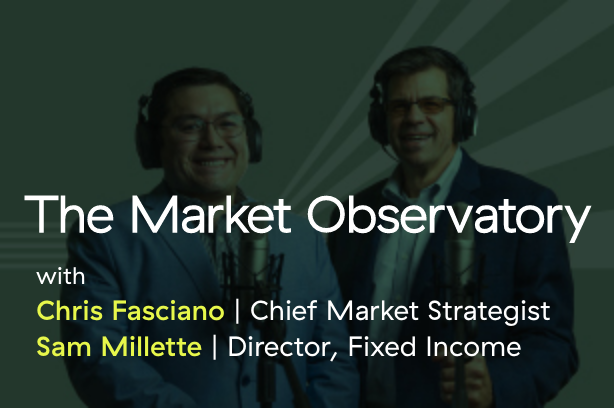My colleague Sam Millette, manager, fixed income on Commonwealth’s Investment Management and Research team, has helped me put together this month’s Market Risk Update. Thanks for the assist, Sam!

November 11, 2021
My colleague Sam Millette, manager, fixed income on Commonwealth’s Investment Management and Research team, has helped me put together this month’s Market Risk Update. Thanks for the assist, Sam!
November 10, 2021
My colleague Sam Millette, manager, fixed income on Commonwealth’s Investment Management and Research team, has helped me put together this month’s Economic Risk Factor Update. Thanks for the assist, Sam!
In October, the markets bounced back strongly, following a difficult September. Here in the U.S., all three major indices were up significantly. The Nasdaq and the S&P 500 gained more than 7 percent, and the Dow went up almost 6 percent. Developed markets showed a smaller gain, almost 2.5 percent, and emerging markets eked out a small rise of 1 percent. Although stocks did well, bonds had another bad month, dropping slightly as interest rates rose.
November 4, 2021
After yesterday’s piece on how many economic indicators are starting to move back to normal, it was nice to have the Fed ratify my point. The Fed has been buying $80 billion per month of Treasury securities and $40 billion per month of mortgage-backed securities. Yesterday, the Fed announced that, effective immediately, it would be cutting $10 billion per month from its Treasury purchases and $5 billion from the mortgage purchases for at least the next two months. Plus, it has the expectation that the drawdown will continue into next year—and possibly accelerate. This is a necessary first step in taking monetary policy back to normal.
November 3, 2021
As we deal with the daily rush of news and data—the elections, the Fed meeting, earnings, and so forth—it is easy to lose sight of the bigger picture. Yes, there is a lot going on. Some of it is good, some of it is bad, and most of it is somewhere in the middle. But if we step back a bit, we can see that, on the whole, we are returning as a country to something like normal, at least on an economic basis.
November 2, 2021
After a difficult September, the markets saw a bounce in October. Both the Nasdaq and the S&P gained more than 7 percent, and the Dow was up almost 6 percent. These results were driven by the stabilization of key economic data. Job growth declined in September, but a higher October result is expected as labor demand remains strong. Plus, consumer confidence has stabilized.
October 29, 2021
I am still in Atlanta this morning, after a terrific watch party with about two dozen of our advisors, sponsors, and guests. It was great to see everyone and especially to meet some new people. That said, today is another travel day, headed back from Atlanta to Boston. So, let’s take some quick hits on news items that intrigued me.
October 28, 2021
Thinking about the constraints I mentioned yesterday, I want to dig a bit deeper into the employment and jobs question. As I wrote last week, I expect the jobs market to stay tight. There are now more jobs out there than there are workers. Unless something drastic changes, that is likely to remain the case. As job growth continues to outpace workforce growth, that situation is likely to force changes, including increased automation.
October 27, 2021
It’s another day of travel for me, as I head to Atlanta to host a National Conference watch party for Commonwealth. Gathering together in Las Vegas, as we had originally planned for our National Conference, was simply too risky. Between full hospitals, the inability to host outdoor events, and the fact that there would be thousands of non-Commonwealth guests in our hotel, it simply didn’t make sense to have everyone take those risks.
October 26, 2021
I have been writing this blog for going on 10 years now and have been in this business for longer than that, so I have been asked a lot of questions. They tend to come in cycles. At this point, unless something like the pandemic comes along, which really is new, they also tend to be variations on a theme.

Episode 13
November 19, 2025
Episode 12
October 14, 2025
Episode 11
September 10, 2025
Episode 10
August 13, 2025
Episode 9
July 23, 2025
The information on this website is intended for informational/educational purposes only and should not be construed as investment advice, a solicitation, or a recommendation to buy or sell any security or investment product. Please contact your financial professional for more information specific to your situation.
Certain sections of this commentary contain forward-looking statements that are based on our reasonable expectations, estimates, projections, and assumptions. Forward-looking statements are not guarantees of future performance and involve certain risks and uncertainties, which are difficult to predict. Past performance is not indicative of future results. Diversification does not assure a profit or protect against loss in declining markets.
The S&P 500 Index is a broad-based measurement of changes in stock market conditions based on the average performance of 500 widely held common stocks. All indices are unmanaged and investors cannot invest directly in an index.
The MSCI EAFE (Europe, Australia, Far East) Index is a free float‐adjusted market capitalization index that is designed to measure the equity market performance of developed markets, excluding the U.S. and Canada. The MSCI EAFE Index consists of 21 developed market country indices.
One basis point (bp) is equal to 1/100th of 1 percent, or 0.01 percent.
The VIX (CBOE Volatility Index) measures the market’s expectation of 30-day volatility across a wide range of S&P 500 options.
The forward price-to-earnings (P/E) ratio divides the current share price of the index by its estimated future earnings.
Third-party links are provided to you as a courtesy. We make no representation as to the completeness or accuracy of information provided on these websites. Information on such sites, including third-party links contained within, should not be construed as an endorsement or adoption by Commonwealth of any kind. You should consult with a financial advisor regarding your specific situation.
Member FINRA, SIPC
Please review our Terms of Use.
Commonwealth Financial Network®